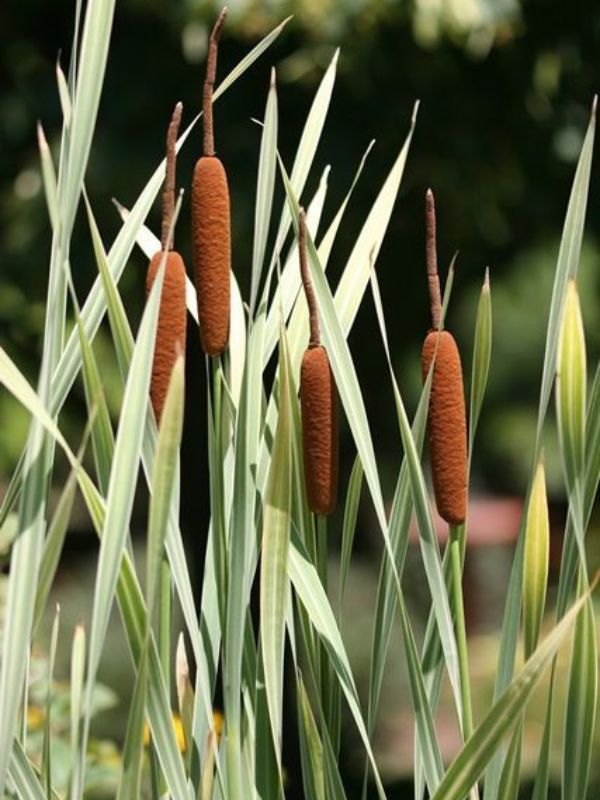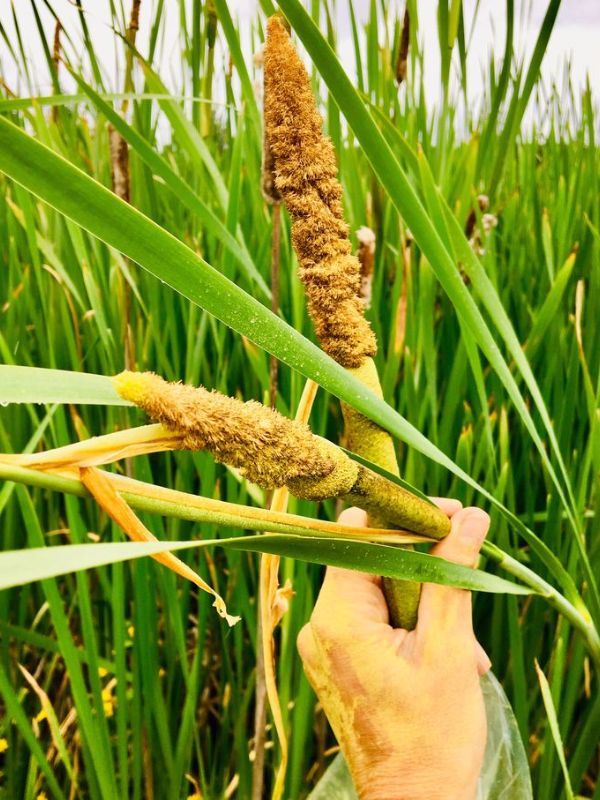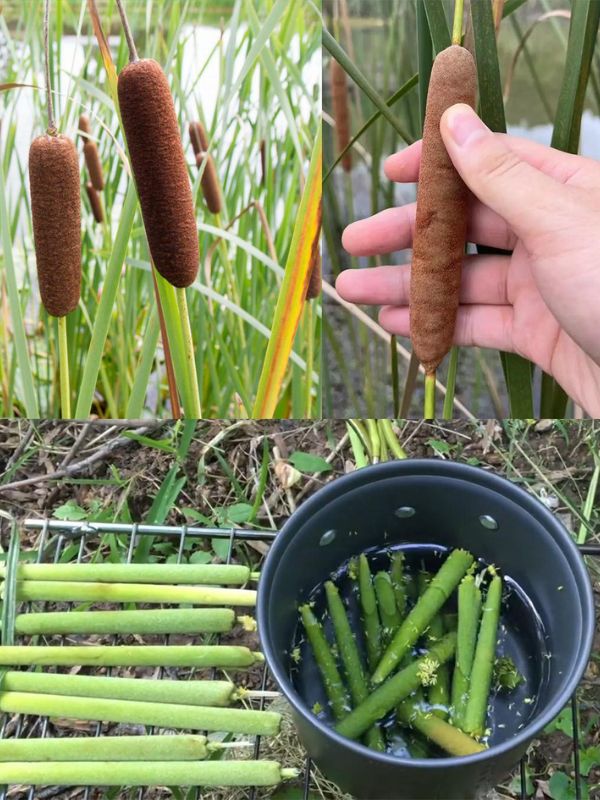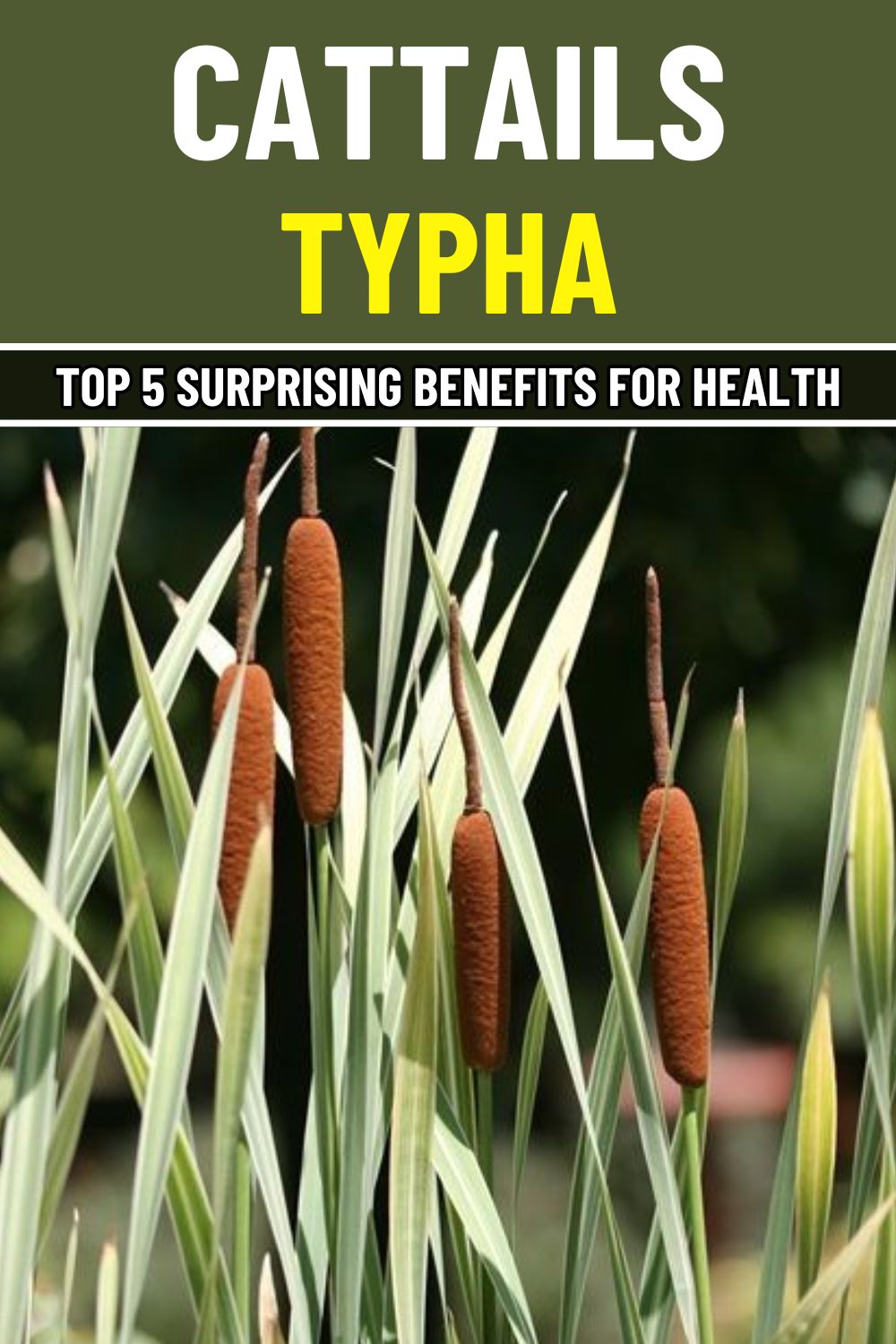Have you ever walked past cattails (Typha) growing in marshy areas and wondered if they serve a purpose? What if I told you this common wetland plant is a nutritious, medicinal, and even survival-friendly powerhouse?
Cattails have been used for centuries in traditional medicine, food, and even shelter-making. From edible roots rich in carbohydrates to antibacterial properties that promote wound healing, this plant is one of nature’s most versatile gifts.
Whether you’re an outdoor enthusiast, a forager, or someone looking for natural remedies and sustainable living, cattails deserve a place in your knowledge bank.
#1. A Nutritional Powerhouse for Survival and Wellness
Cattails are an excellent source of carbohydrates, protein, and fiber, making them a great wild food. The roots (rhizomes) contain about 80% starch, comparable to potatoes, and provide a sustainable energy source.
Young shoots and inner stalks are rich in vitamins A, B, and C, supporting immunity and skin health.
Pollen from cattails is high in protein, making it a great plant-based supplement.
Many survival experts consider cattails “the supermarket of the wild” because every part of the plant is useful. Regular consumption of cattail roots and shoots can provide essential nutrients for energy and overall health.

#2. Natural Wound Healing and Antibacterial Properties
Did you know that cattail gel (found at the base of the plant’s leaves) has natural antimicrobial and anti-inflammatory properties?
Traditionally used by Native Americans to soothe wounds and burns, cattail gel is a natural alternative to antiseptics. Studies have shown that plant-derived mucilage like cattail gel helps accelerate skin regeneration and reduce infections.
If you ever need a quick, natural remedy for minor cuts, insect bites, or burns, cattail gel can help speed up the healing process.
#3. Supports Digestive Health and Detoxification
Cattails offer fiber-rich parts that help support gut health and digestion. The young shoots and roots contain soluble fiber, which promotes healthy digestion and prevents constipation.
The plant is also known for its mild diuretic properties, helping the body flush out toxins and reduce bloating. Incorporating cattail-based foods into your diet can aid digestion, regulate metabolism, and support overall detoxification.

#4. Helps Reduce Inflammation and Boosts Immunity
Cattail pollen isn’t just a protein-rich supplement—it’s also packed with antioxidants and anti-inflammatory compounds.
Research suggests that cattail pollen may help reduce joint pain and chronic inflammation, similar to some herbal anti-inflammatory remedies.
The high levels of flavonoids and polyphenols in the plant support immune function and cellular health.
Drinking cattail-infused herbal teas or adding its pollen to smoothies can help protect the body against oxidative stress.
#5. Provides Sustainable and Emergency Food Solutions
In times of food shortages or survival situations, cattails can provide a reliable food source year-round. The roots can be ground into flour and used to make bread, soups, or thickening agents.
The young shoots can be eaten raw or cooked like asparagus. The pollen can be used as a protein supplement in shakes or baked goods.
This makes cattails a sustainable, highly available, and easy-to-harvest food in case of emergencies.

How to Use Cattails in Everyday Life
1. Cattail Root Flour for Cooking
First, harvest the rhizomes (roots) from mature cattails and rinse them thoroughly. Next, peel off the outer layer and grind the inner starchy core into a paste.
Then, let the paste dry and crush it into fine flour. Finally, use it as a substitute for wheat flour in baking and cooking.
2. Cattail Gel for Skin Healing
Cut a fresh cattail leaf and squeeze out the gel from its base. Apply directly to cuts, burns, or rashes for relief. Repeat twice daily for best results.
3. Cattail Tea for Detox and Digestion
First, gather young cattail shoots and rinse them. Then, boil in water for 10–15 minutes. Strain and drink warm to support digestion and immunity.
4. Cattail Pollen as a Protein Supplement
Shake pollen from the mature flowers into a container. Mix with smoothies, yogurt, or baking recipes for a nutrient boost.

Cautions and Precautions
Ensure you’re harvesting from clean water sources cattails grow in wetlands and may absorb pollutants if grown in contaminated areas.
If you have pollen allergies, avoid using cattail pollen, as it may trigger reactions. Avoid eating the tough outer leaves as they are not digestible and can be hard on the stomach.
Always test small amounts before consuming or applying topically to ensure you do not have a sensitivity.
Disclaimer
This article is for informational purposes only and does not substitute for professional medical advice. Always consult a healthcare professional before using cattail-based remedies if you have any medical conditions.

The Incredible Benefits of Cattails: A Survival Superplant with Healing Powers
